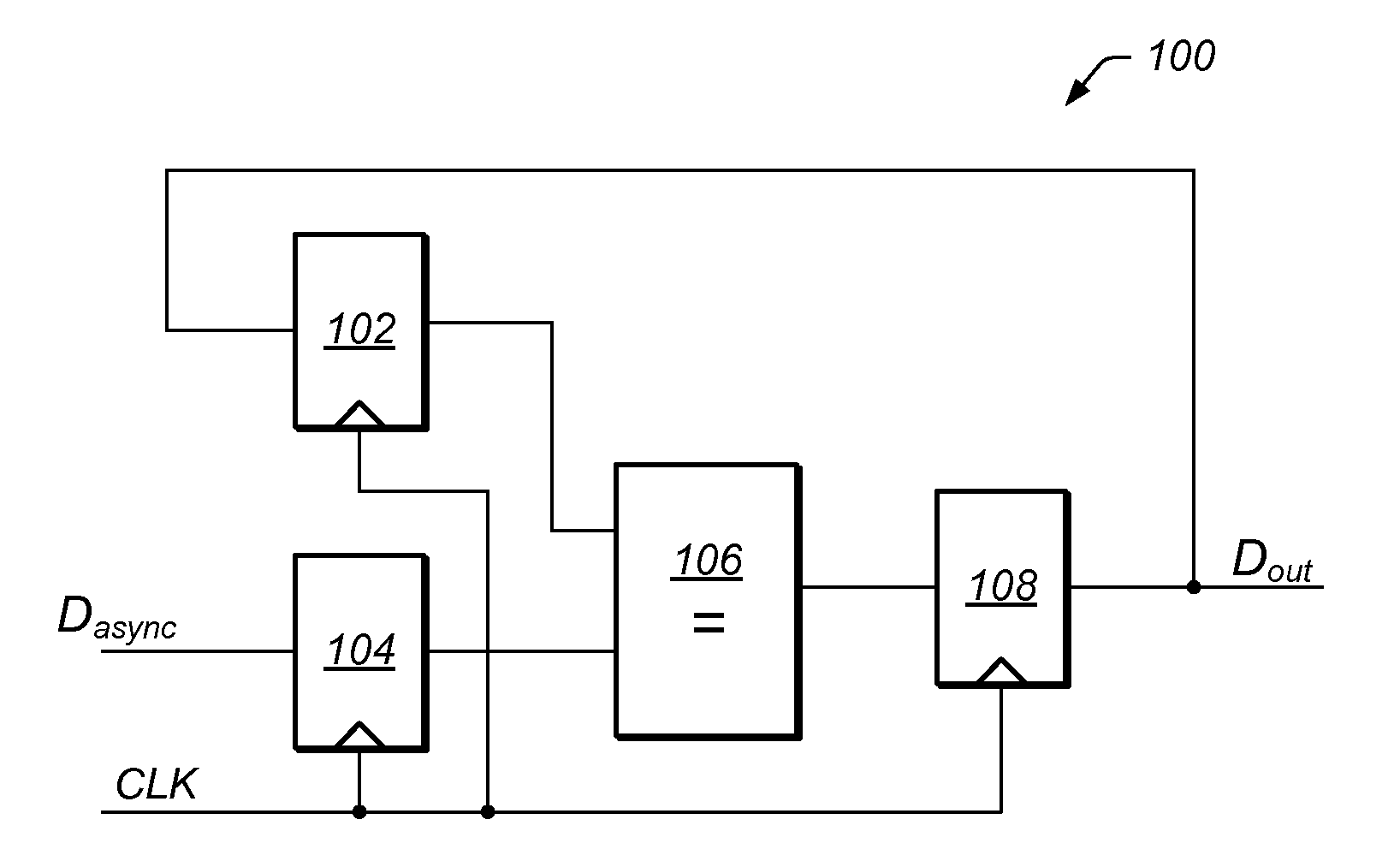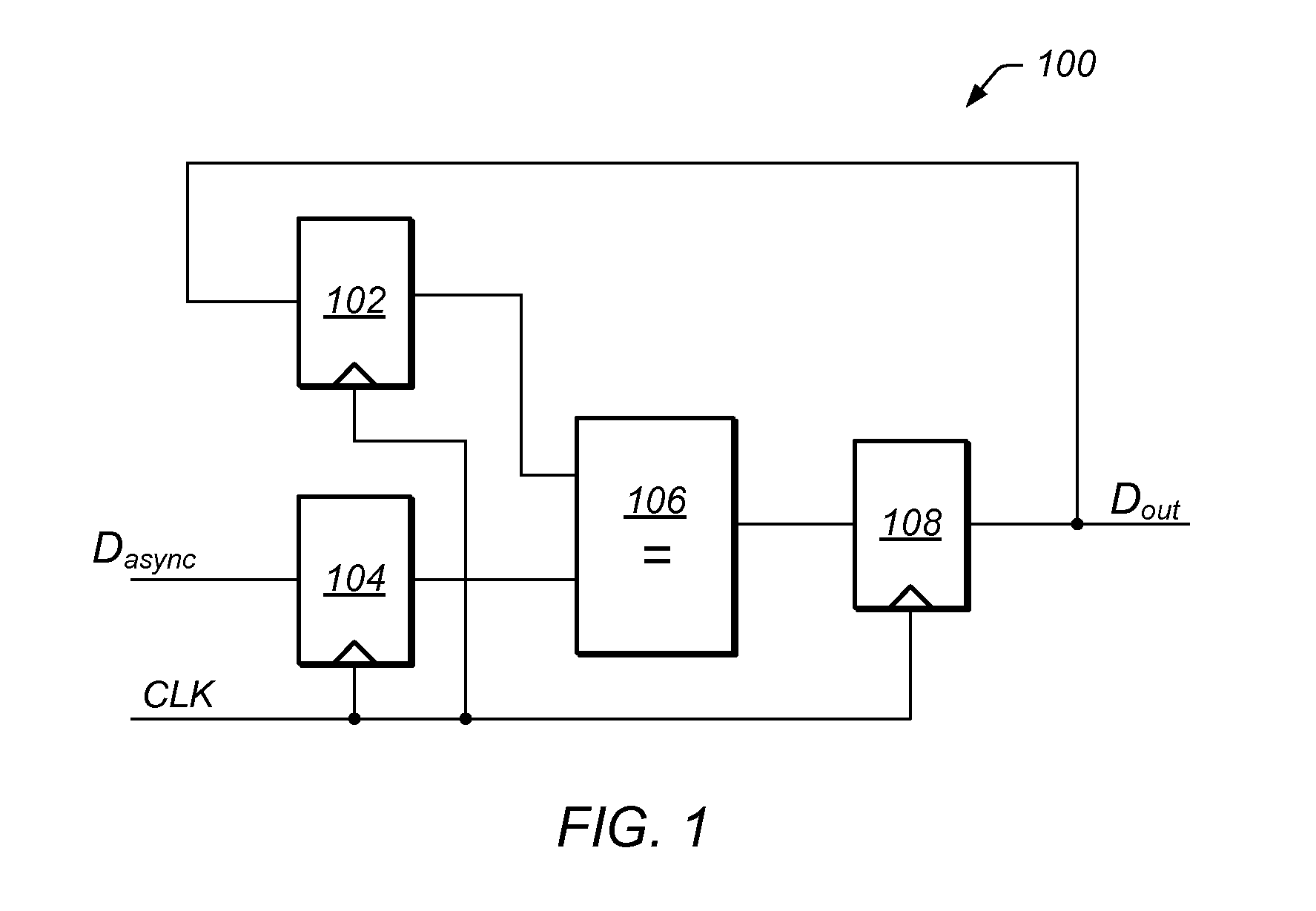Self-Gating Synchronizer
a synchronizer and self-gating technology, applied in the field ofsignal synchronization, can solve the problems of metastability, the failure mode of most digital systems, and the unpredictable system behavior of the synchronous digital system, so as to reduce power consumption and silicon area, and reduce the latency of synchronization. , the effect of speed increas
- Summary
- Abstract
- Description
- Claims
- Application Information
AI Technical Summary
Benefits of technology
Problems solved by technology
Method used
Image
Examples
Embodiment Construction
[0021]As described herein, for ease of reference, a data signal and / or a data value is said to be metastable, or in a metastable state when its value is undefined in terms of the expected logic values in a digital system. Such a state is also referenced as a logically undefined state, indicating for example that a voltage value representing the data value does not correspond to a logically defined state such as logic ‘0’ or logic ‘1’. Accordingly, the behavior of such signal could potentially cause a circuit or logic block within a circuit / system—to which the data signal / value is provided—to also enter a metastable state, or logically undefined state, thereby propagating the metastable state within the system. For example, in a synchronous circuit operated according to a given clock signal, a data signal or data value provided to a given latch may transition at the same time, or very close to the same time as the clock signal / value on which the data value is gated by the given latch...
PUM
 Login to View More
Login to View More Abstract
Description
Claims
Application Information
 Login to View More
Login to View More - R&D
- Intellectual Property
- Life Sciences
- Materials
- Tech Scout
- Unparalleled Data Quality
- Higher Quality Content
- 60% Fewer Hallucinations
Browse by: Latest US Patents, China's latest patents, Technical Efficacy Thesaurus, Application Domain, Technology Topic, Popular Technical Reports.
© 2025 PatSnap. All rights reserved.Legal|Privacy policy|Modern Slavery Act Transparency Statement|Sitemap|About US| Contact US: help@patsnap.com



